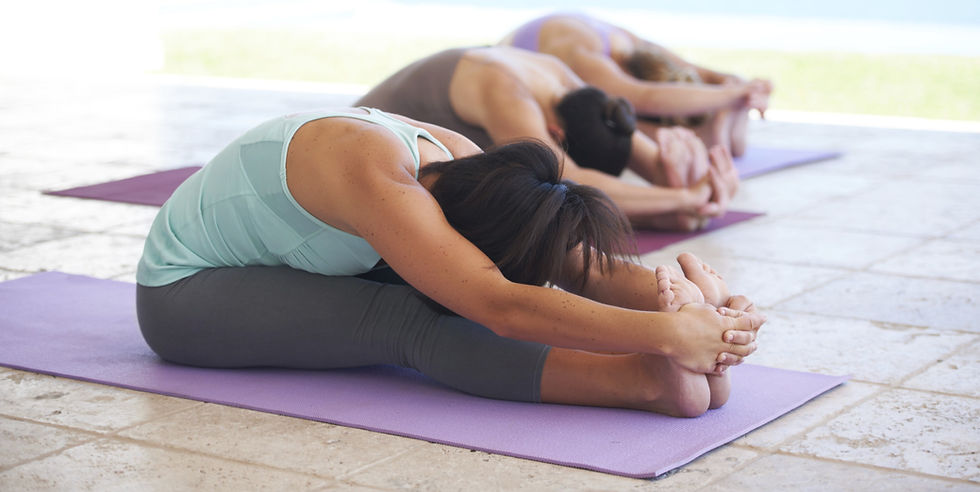Is Stretching Good For You?
- Hannah Bellamy

- Mar 13, 2023
- 2 min read
Stretching can improve human potential, not only in sport but also in everyday life. Some benefits include improved range of movement, increased power, improved circulation, reduced muscle soreness following exercise and reduced fatigue. It is important the stretches are performed correctly, as poor technique can lead to injury.

Each muscle in your body contains very small stringy cells called muscle fibres. Muscles fibres are long and are stacked up snuggly together. Each muscle fibre is further composed of another series of even smaller threads called myo-fibrils, which are important at helping the muscles to contract, lengthen and relax. When you lengthen a muscle during a stretch, it is these muscle fibres you’re encouraging to adapt to a particular movement.
Improving muscle flexibility will increase range of motion, which we know, over time, can help reduce the risk of injury. Post exercise muscle soreness, which is the result of microtears in the muscle, is often reduced with stretching by clearing waste accumulation (e.g., lactic acid) and blood pooling. This improvement to blood circulation introduces greater levels of oxygen to the muscle so can reduce fatigue.
There are two types of stretching: static and dynamic
A static stretch is the easiest form of stretching. It is for both beginners and those who aren’t so active. It involves stretching a joint or muscle as far as it can comfortably go and then holding the position for a period. By focusing on breathing, the stretch can be made deeper, thus increasing the benefits. If done with the assistance of another person or apparatus, it is called a passive stretch. Isometric stretches are passive stretches held over a period and with a greater intensity. An active stretch is when we additionally challenge muscle strength during the stretch, such as raising a leg high in the air and holding it in that position without any assistance.
In contrast, dynamic stretches use movement during the stretch. Whilst holding the stretch, one moves (e.g., swing or bounce) the body part to improve its range of motion. The forces generated by the additional movement are thought to increase flexibility and strengthen the muscle simultaneously. As dynamic stretches are more demanding than static ones, they are recommended for active people only.
Stretching does come with its risks and to avoid injury it is therefore recommended to:
Warm up prior to stretching. Increasing the body temperature helps to loosen the muscles making them more supple. This can be done by light exercise or a warm shower.
Stretch all major muscles and their opposing muscle groups. All muscles have a part to play when moving and it is crucial to work on both sets to avoid imbalances.
Stretch gently and slowly and only to the point of tension – no further
Focus on gentle breathwork to intake a good flow of oxygen. This should also help to go deeper into the stretch.
By getting into a routine with stretches, one will be surprised how much better their body feels and works.
Speak to a massage therapist or chiropractor and ask for a programme of stretches specific to your needs. Attending yoga or Pilates classes is also an excellent way of introducing regular stretching into your life. For further information, please contact our clinic – we are always happy to help.

(Hannah Bellamy is a Clinical massage therapist at Guildford Chiropractic Centre. Guildford Massage)




Comments